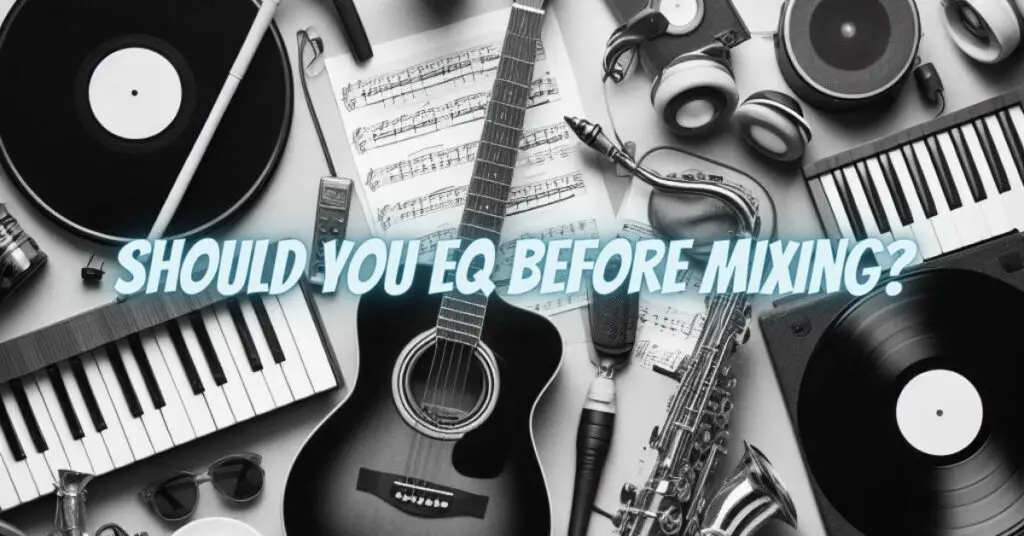The process of audio mixing is a complex art, and one of the questions that often arises is whether you should apply equalization (EQ) before the formal mixing stage. In this article, we’ll explore the concept of EQ before mixing, discuss the pros and cons, and help you make an informed decision about when and how to use EQ in your audio production workflow.
The Role of Equalization in Audio Mixing
Equalization is a powerful tool in audio mixing, allowing you to shape the tonal balance of individual tracks and create a cohesive and well-balanced mix. It serves various purposes, including:
- Frequency Balancing: EQ is used to adjust the balance between different frequency ranges in a track, ensuring that no frequency range overwhelms the mix.
- Tonal Enhancement: It can be used to enhance the clarity and character of individual tracks, making vocals, instruments, and other elements stand out.
- Problem Solving: EQ is often used to correct issues such as resonant frequencies, muddiness, or harshness in a mix.
- Space Creation: By carving out frequency space for each element in the mix, EQ helps prevent instruments from competing for the same sonic space.
The Pre-Mix Equalization Debate
Pros of EQ Before Mixing:
- Sound Enhancement: Applying EQ before the formal mixing stage can enhance the quality and character of individual tracks, making it easier to shape the overall mix.
- Problem Solving: Correcting glaring issues in the source material at the EQ stage can save time and effort during the mix.
- Clarity and Focus: Pre-mix EQ can help in achieving a cleaner and more focused sound, making it easier to distinguish between tracks and instruments.
Cons of EQ Before Mixing:
- Loss of Flexibility: Applying EQ too early may lock you into certain tonal decisions, limiting your flexibility during the mix. You might discover that a different approach is needed once all tracks are combined.
- Over-Processing: Excessive EQ applied individually to tracks can lead to over-processing and a loss of the original character of the source material.
- Phase Issues: Applying EQ to individual tracks before mixing can sometimes introduce phase problems when the tracks are combined, leading to sonic artifacts and muddiness.
When to Consider EQ Before Mixing
- Corrective EQ: If individual tracks have glaring issues, such as excessive resonances or harsh frequencies, using EQ before mixing to correct these problems can be beneficial.
- Tonal Characterization: When you want to emphasize the unique character of individual tracks or instruments, pre-mix EQ can be a creative choice.
- Sound Design: In cases where EQ is used for creative sound design purposes, such as shaping the timbre of a specific instrument, applying EQ before mixing may be part of the production process.
The decision of whether to use EQ before mixing is not a one-size-fits-all approach. It depends on the specific context of your audio production and your creative objectives. Corrective EQ and tonal characterization are valid reasons for applying EQ before mixing. However, it’s important to use EQ judiciously to avoid over-processing and phase issues. Ultimately, the key to successful audio production lies in your ability to balance creative choices with a commitment to achieving a cohesive and well-balanced mix.


